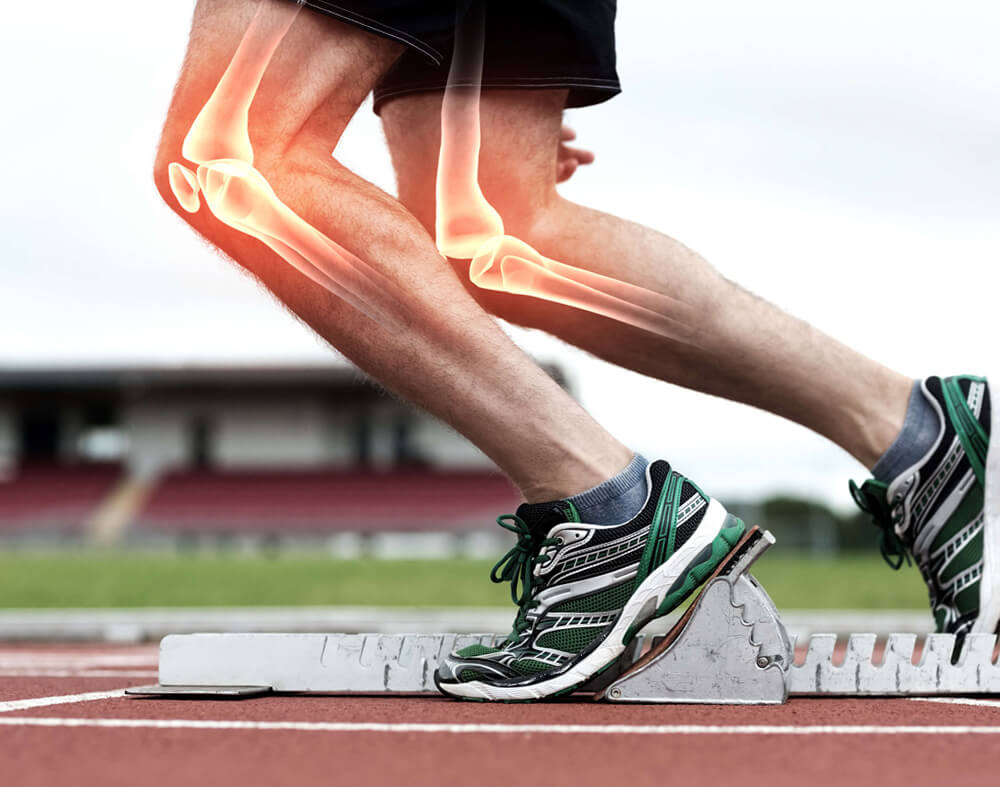Some people may notice a ‘crunch’ in their knees when going up the stairs. It’s not an inner lateral knee pain but more of a clicking sound. This crunch in the knee when you are climbing stairs is usually a symptom of chondropathy of the patella. That is a wear of the cartilage of the patella.
In most cases, this creaking is sporadic and usually improves with anti-inflammatory medication. This article explains every detail you notice before seeing a knee specialist.
When should I consult with a traumatologist?
According to our specialist, it is advisable to go to the consultation of a traumatologist when the crack is:
- incapacitated
- Causes blockages.
- It causes frequent discomfort.
- The inconvenience is serious.
Given these symptoms of a possible knee injury, you should go to a specialist in Hip & Knee Orthopedics to do a complete study of the knee, which includes an X-ray.
Some people who have knee discomfort, who have been taking anti-inflammatories for a few days and going to the physical therapist, wonder why they do not improve. If the pain is tolerable, you can wait six or twelve weeks before consulting the traumatologist to start a study.
But suppose the discomfort is progressive, with swelling of the knee and inability to walk. In that case, there is no need to wait. It is necessary to see a specialist as soon as possible to assess the situation and establish the most appropriate therapeutic guidelines according to the characteristics of the knee injury.
What are the most common treatments?
Once the extent of the knee injury has been determined, the information provided by the imaging tests and the clinical history helps the specialist. The specialist decides on the most appropriate treatment for the patient. This treatment can be conservative, with hyaluronic acid infiltrations, or surgical in very advanced cases.
I suffer from chondromalacia; what can I do?
Chondromalacia is defined as a wear of the patellar cartilage and occurs due to the positioning of the patella or joint. This disorder can appear if there are common problems with the femur. For the joint to work properly, several elements are involved: the bones, the muscles, the tread, and how you walk.
Once the knee injury has been diagnosed, the best treatment is conservative, with postural hygiene, an adaptation of physical activity to its functional characteristics, and physiotherapy.
What to do if you have had knee surgery and it bothers you?
If you have had surgery and your knee bothers you, you should consult the orthopedic surgeon who operated on you. Our specialist indicates that “if the discomfort is severe and with a great activity limitation, you should go to the hospital’s emergency room where the intervention was carried out.”
It is crucial to keep in mind not to take any additional medication to mitigate the pain. In this context, no other treatment should be taken until a traumatologist from your hospital assesses you. In addition, you should avoid antibiotic treatment.
Can Baker’s cyst be operated on?
The Baker cyst is a lump that contains fluid inside and is located behind the knee. If the knee produces a tremendous amount of synovial fluid, it accumulates in the back of the knee, forming the cyst. Baker’s cyst is the consequence of a specific pathology, generally a meniscus injury or chondropathy.
Therefore, you must treat the cause. Only in vast and chronic cysts is direct excision indicated.
Baker’s cyst symptoms
The most common symptoms of Baker’s cyst are:
- Swelling at the back of the knee.
- Joint pain.
- Stiffness in the knee.
- Not being able to fully flex the knee due to this movement’s pain produces.
These symptoms may be more acute after prolonged standing and after exercise.
Conclusion
So if, after practicing sports, you feel pain behind the knee and you notice that a “lump” has appeared, you should consult a specialist in Traumatology to assess your case. Suppose you consider that the cyst is large enough to prevent you from carrying out your activities comfortably. In that case, your traumatologist will assess the possibility of removing the cyst by draining the fluid inside it and prescribing a physiotherapy regimen that helps improve your knee condition.
Also Read: How To Find The Right Warehouse For Rent In Houston.



